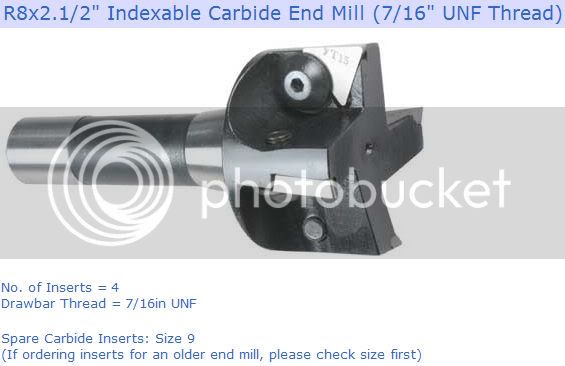It is very difficult to quote accurate speeds for tooling like that
That is my quote, and I love it when the lads come along and give such exact figures, nothing wrong with that at all, if you have all the exact facts laid bare before you.
Even though I do use tables sometimes, I never do it religiously, all because something called 'mild steel' could mean a myriad of materials, materials with names such as phos bronze and stainless conjure up a nightmare of a scenario when trying to calculate out exact cutting rates.
It might seem a little slapdash of me talking about listening to the machine and cutter, then adjusting the feeds and speeds to suit, but that is always the way I do it when in first contact with an unknown material, which I think happens a fair amount in our circles, as we are the vultures of the machining world, cleaning up the dregs of other peoples throwaways and recycled materials.
A spark test can sometimes help in pointing you in the right direction, but that is wide open to debate because of the way people interpret their findings. But at least it should put you on the right sort of track.
I would like to think of it as intuition on my part, being able to guesstimate a rough starting point for the material I have in the vice, others just might call it a lucky guess.
Am I wrong doing it the way I do?
Flying by the seat of my pants, and 99% of the time ending up with perfect finishes and exact sizes, or following exact figures and accepting what the machine gives me.
I would bet a lot of the professional machinists amongst us don't stick rigidly to the figures when manually machining up a lump. I'm sure they all give a little tweak here and there to get it 'sounding' or 'feeling' right.
But what other starting point do we have when challenged with an unknown material?
This would be a great article for a debate.
"With an almost unknown lump of metal, where do we start, charts or intuition?"
I personally don't think there is a right or wrong way when it comes to doing jobs like we do. If you find one way works for you, then stick with it, otherwise try another method.
Blogs






